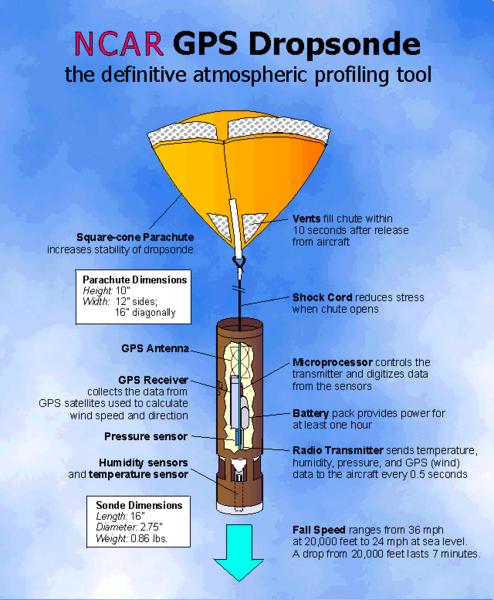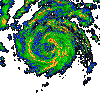The Hurricane Hunter airplanes are very sophisticated aircraft assigned to fly into hurricanes to gather data about the storm. They release data gathering canisters containing sensors that relay information back to the meteorologists and scientists onboard the plane. These instruments are called dropsondes. They are weather sensors that measure atmospheric pressure, temperature, and humidity. The dropsonde uses a GPS to also help determine the wind in and around a hurricane. As the probes fall through the storm at nearly 35 miles per hour it relays data back to the aircraft. Over 50 dropsondes are released into a hurricane during each flight.

A dropsonde operator places the instrument inside a tube and sends it down a chute where it is released from the bottom of the aircraft. A parachute opens to allow the instrument to float down while collecting and transmitting their data.
Stanitski, Diane Marie and John J. Adler, Teacher in the Air, Dr. Diane's Flight with the NOAA Hurricane Hunters. National Oceanic and Atmospheric Administration, 2006.
Dropsonde image from: rvanews.com

